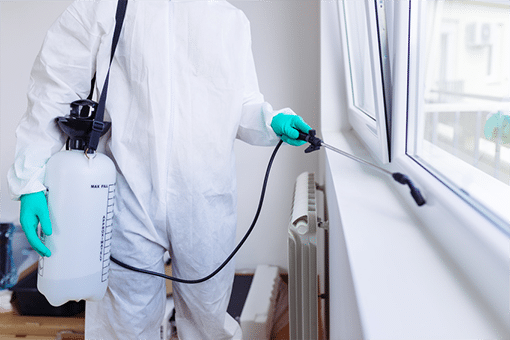Professional Pest Control Techniques for Long-Term Outcomes
In the realm of pest control, attaining sustained efficacy and lasting results calls for a careful method that goes beyond simple extermination. Specialist bug control techniques envelop an extensive strategy that starts with a complete evaluation and analysis, complied with by specific bug recognition to comprehend their actions patterns. The application of Integrated Pest Administration (IPM) concepts, coupled with eco-conscious therapies, forms the foundation of sustainable bug eradication. The real test lies in the recurring monitoring and upkeep of the dealt with areas, making sure a pest-free setting for the foreseeable future. By delving right into the intricacies of these methods, a much deeper understanding of professional bug control approaches for withstanding end results emerges.
Evaluation and Evaluation
Upon going into a residential or commercial property for insect control services, the preliminary step is an extensive examination and evaluation to determine the degree of the invasion and identify the most effective treatment strategy. Specialist bug control professionals are educated to thoroughly take a look at the properties, seeking indicators of bug activity such as droppings, nibble marks, nests, or any architectural damage. They will certainly additionally examine the problems that may be bring in insects, such as food resources, water leaks, or access points.

Insect Recognition and Actions

Additionally, understanding the actions of the identified parasite is essential to applying efficient control actions. Understanding where insects nest, what they feed on, and their task patterns when to do pest control for home can assist pest control professionals design approaches to remove them effectively.
Integrated Insect Monitoring (IPM)
Integrated Bug Administration (IPM) techniques combine numerous strategies to control and protect against insect infestations in a sustainable and eco-friendly fashion. bed bug exterminator. By integrating approaches such as biological control, habitat control, adjustment of cultural practices, and the use of resistant ranges, IPM intends to decrease using chemical pesticides
One of the vital principles of IPM is the emphasis on avoidance. This positive strategy involves tracking pest populations routinely to identify any kind of potential issues prior to they rise. By recognizing bug problems early, pest control measures can be applied quickly and successfully.
In addition, IPM advertises the use of non-toxic parasite control techniques whenever feasible. This can consist of utilizing all-natural predators of the parasites, presenting useful insects, or using pheromones to interfere with mating patterns. By reducing dependence on chemical pesticides, IPM not just safeguards the setting but additionally helps maintain a balance in the environment.
Environmentally-Friendly Therapies
Implementing eco-conscious techniques in parasite control treatments can successfully Your Domain Name resolve invasions while focusing on ecological sustainability. Environmentally-friendly therapies focus on minimizing the impact of pest control methods on ecological communities, non-target organisms, and human health. These techniques commonly involve using natural predators, such as ladybugs or nematodes, to manage pest populaces, reducing the requirement for chemical interventions. Furthermore, strategies like habitat adjustment, such as readjusting dampness levels or getting rid of food resources, can aid hinder insects without the use of dangerous materials.
Another secret facet of environmentally-friendly treatments is using organic and naturally degradable products that break down swiftly without leaving damaging deposits in the atmosphere. Botanical pesticides stemmed from plants like chrysanthemums or neem use efficient parasite control while presenting very little threat to non-target varieties. In addition, employing approaches like warm treatments or pheromone catches can target particular parasites with accuracy, reducing the total environmental impact of pest control practices.
Recurring Surveillance and Upkeep
Normal examinations by qualified experts are required to recognize any kind of signs of bug activity, assess the effectiveness of previous treatments, and make changes to the parasite control plan as needed. By monitoring pest populations Continue over time, parasite control professionals can track fads, prepare for potential problems, and implement preventative procedures to reduce the danger of future problems.
In addition to surveillance, upkeep practices are vital for long-term pest control success. This consists of implementing proper cleanliness procedures to get rid of possible food and water resources for insects, sealing entry indicate protect against insects from entering the facilities, and dealing with any type of structural concerns that could assist in parasite problems (bed bug treatment). By incorporating recurring monitoring and maintenance into an incorporated insect administration technique, companies can make sure a pest-free environment and protect their property versus costly damage and health threats
Final Thought
Finally, utilizing professional insect control techniques such as detailed inspection and analysis, precise bug recognition and understanding of their habits, incorporated parasite administration strategies, environmentally-friendly therapies, and continuous monitoring and upkeep are essential for attaining long-lasting cause bug control. By implementing these methods, people can successfully handle bug invasions and maintain a pest-free environment in a sustainable manner.